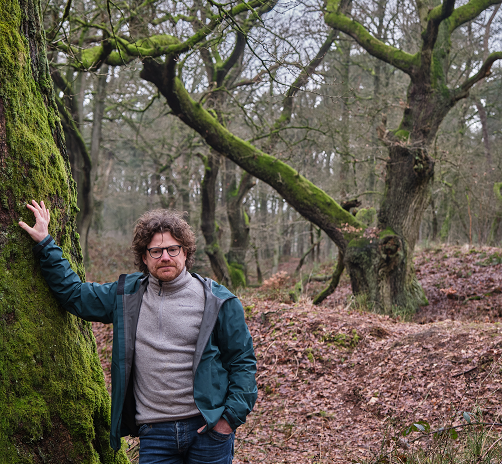We need a new approach to nature conservation that is based on the cultural and spiritual significance we ascribe to nature. Bas Verschuuren has drawn up guidelines for this.
The guidelines were published recently. For Verschuuren (Forest and Nature Policy) and the working group he leads, this is nothing less than a milestone. The group’s work was commissioned by the International Union for the Conservation of Nature (IUCN) – a sign that the largest nature conservation organization in the world recognizes the importance of taking a broader view of nature and nature conservation.
At the core of the new vision is the conviction that nature conservationists need to make much better use of the relationships people already have with nature. That applies not just to the general public, but also to religious groups and indigenous communities. ‘The practice of nature conservation is embedded in many cultures and their worldviews. It’s just that their practices look different to our Western model of nature conservation.’
In your vision, it is not the value of nature but cultural and spiritual values that are the basis for nature conservation. Isn’t that an extreme standpoint?
‘By giving importance to the cultural value of nature, you acknowledge the relationship that existing cultures already have with the nature around them. That relationship leads to a lot of biodiversity being protected. Indigenous communities, a small proportion of the total world population, manage 30 per cent of the Earth’s surface. And 80 per cent of the biodiversity on the Earth is found in those areas. Those communities do that because their culture tells them to, and not because they’re living in a national park. Nature is a cultural construct. Most of the 7000 languages in the world do not have a word for nature. But we nevertheless have the IUCN, an organization that works for nature conservation all around the world. There’s a clash there. Only since 2008 has the IUCN acknowledged that there are different concepts of nature and that different worldviews exist. In short, that there’s more to knowledge of nature than scientific knowledge.’
Do you have an example of nature and culture clashing around here?
‘Around here? Well, take the Veluwe, which is a hotspot for both cultural heritage and nature. We all love running, walking or mountain biking there. The tourist industry wants to go on developing there and there are lots of conflicting interests.
There’s more to knowledge of nature than scientific knowledge
The question now is whether paying more attention to the cultural significance of the landscape, and people’s relationship with it, can have an impact on the way it is managed. That calls for a different attitude. An attitude which includes an awareness that what people care about is not a peripheral issue but a key issue.’
Do spiritual values attached to nature play a role in the Netherlands too?
‘They certainly do! More and more people seek relaxation and inspiration in the forests. A nice example is “forest bathing”, a phenomenon that came over from Japan. It means just sitting in the forest leaning against a tree and savouring the moment, or meditating. Just as you might in a hot bath. Yoga schools are going into nature. There are professional shamans who take their clients into the forest for a healing session. One of my colleagues and I are doing research on how forest managers are taking such spiritual experiences of the forest into account.’
You and your colleagues are introducing ‘significance-led conservation’: nature governance guided by meaning. What is that?
‘The idea is that you take different values into account, as well as different kinds of knowledge and experiences of nature. And that you don’t just look at biodiversity, but also at the relationships people have with the area and what it means to the society.’
Does that lead to a different governance approach?
‘We think so. You give spatial expression to the various interests represented in an area. A very practical example is zoning. You designate areas which are perfect for running shamanistic workshops or doing yoga, as well as areas that you want to leave in peace because endangered species live there.’
Is ‘engagement’ a keyword in this approach?
‘A support base is becoming more and more important in nature governance. I live in Doorwerth, where there are trees in the woods known as “Odin’s Oaks”. Those trees inspired the landscape artists of the Oosterbeek School in this area in the 19th century and have become iconic. But they are almost dead. There’s nothing wrong with that; that’s nature. But wouldn’t it be lovely if artists were to paint these Odin’s Oaks again now, so the trees’ cultural value once more involves people in the area?’
Is that new approach reflected in Wageningen courses?
‘Increasingly. I cover it extensively in my lectures. Our chair group has courses that place the relationship between people and nature central with regard to nature policy. I dream of creating a dedicated course or “capital selecta” on this theme. Talks have started on this, but I can’t say too much about it yet.’

 ‘Wouldn’t it be lovely if artists were to paint these Odin’s Oaks again so that the trees’ cultural value once more involves people in the area?’ Photo Guy Ackermans
‘Wouldn’t it be lovely if artists were to paint these Odin’s Oaks again so that the trees’ cultural value once more involves people in the area?’ Photo Guy Ackermans 

